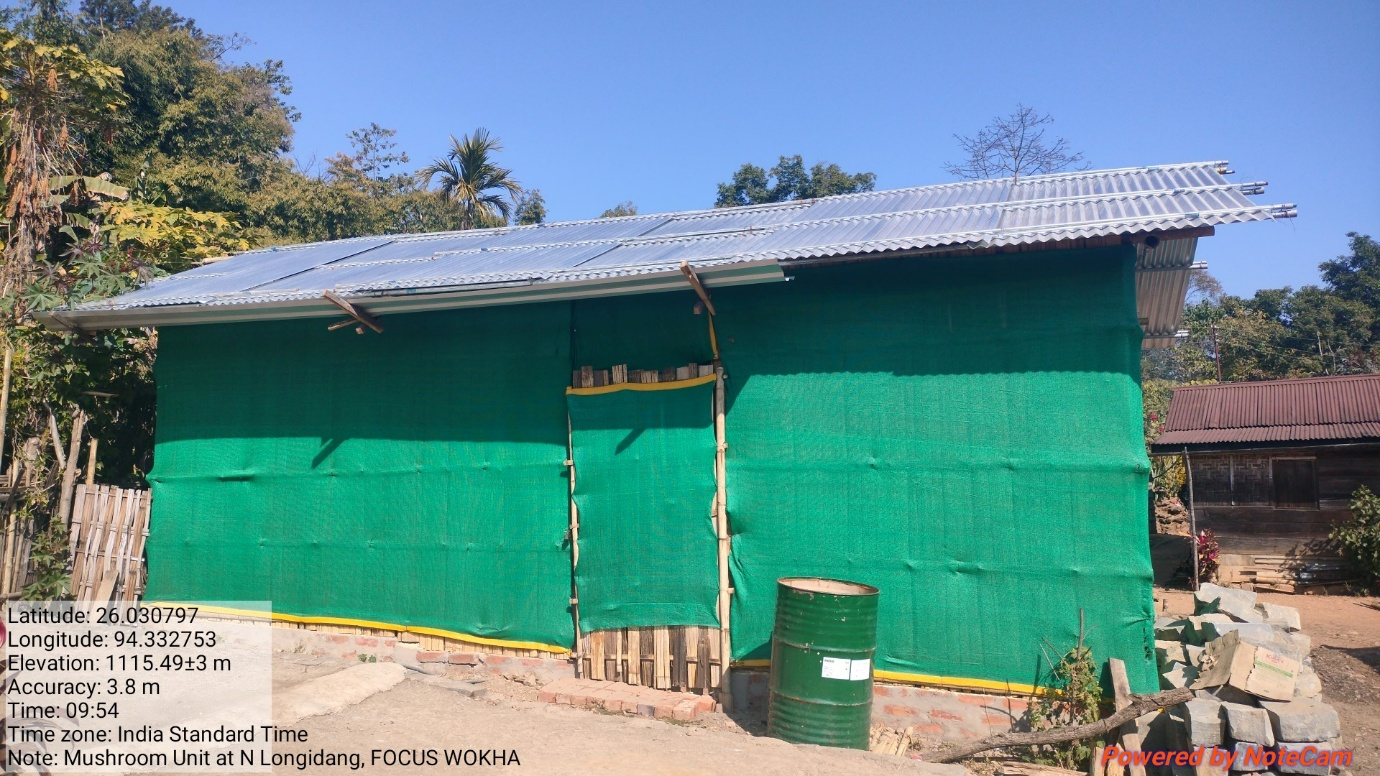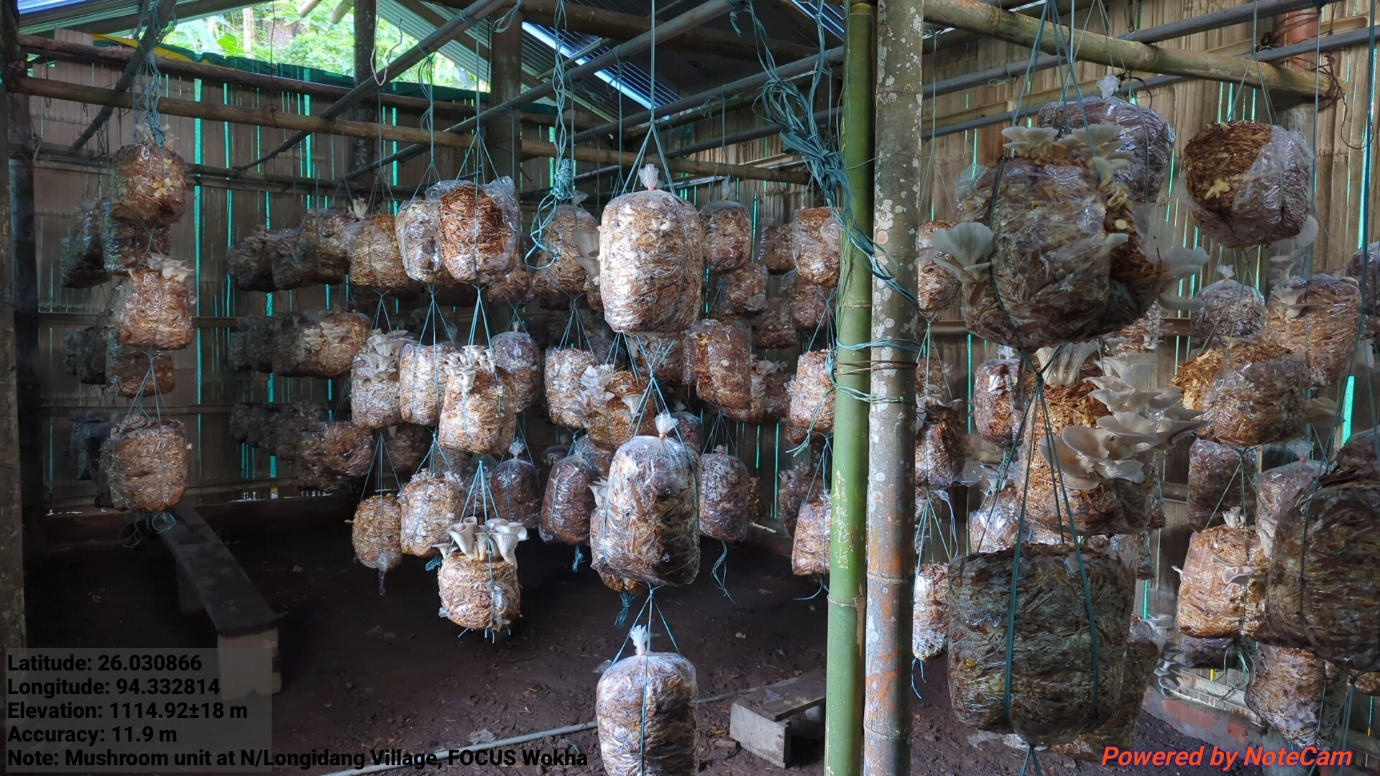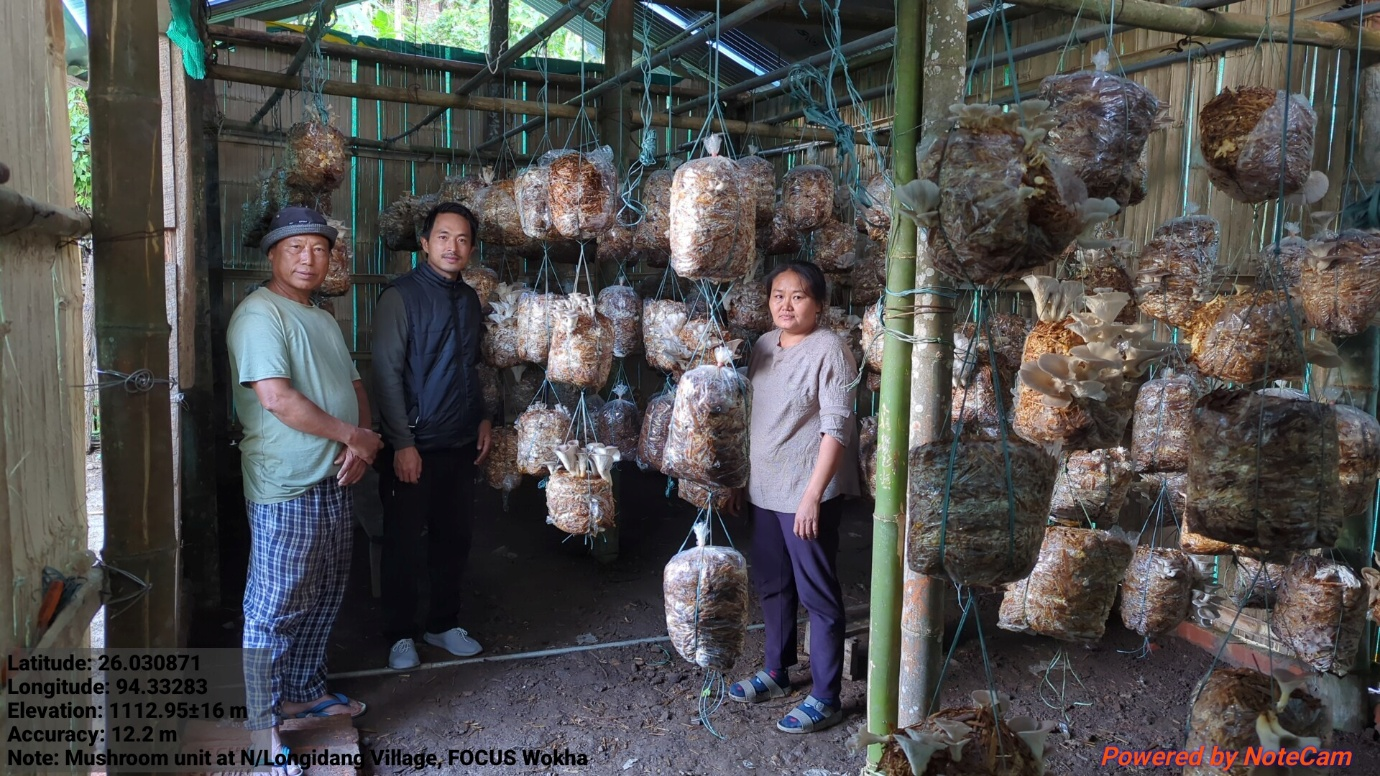At 73 years of age, T Eyingbemo Murry from N Longidang village under Wokha district is setting an inspiring example of how knowledge and determination can lead to meaningful change. Heading his village farmer group, Murry has brought mushroom cultivation to the forefront of rural livelihood in his community, driven by a personal mission to share agricultural knowledge with fellow villagers.
Murry began cultivating mushrooms in 2023 with the primary objective of introducing and imparting mushroom cultivation techniques to his village. “My main objective was to bring the knowledge of cultivation to the village and impart it to the villagers,” he said.
His aspiration and potential were further boosted by the International Fund for Agricultural Development (IFAD)-funded Fostering Climate Resilient Upland Farming Systems (FOCUS) programme in Nagaland, where he was given the opportunity to learn techniques and later teach and train others. This marked the beginning of his cultivation journey.
Download Nagaland Tribune app on Google Play

With support from Focus-IFAD, oyster mushroom seeds were provided along with all necessary materials required for cultivation. The project also constructed a house exclusively for mushroom farming.
“All we invested was labour,” Murry said, explaining how villagers contributed their effort by collecting straw and doing all the manual work required for the cultivation process.
He cultivates two varieties of mushrooms- shiitake, provided by the Nagaland State Rural Livelihood Mission (NSRLM), and oyster, by Focus-IFAD.

The oyster mushrooms are cultivated using straw.
“We collect the straw, chop it, soak it in water, and sterilise it. After cooling, we pack it in bags along with the mushroom seeds. These are then kept in the cultivation house, and after a few weeks, they begin to bloom,” he explained.
As for shiitake mushrooms, Murry said that they are grown using wood logs.
“One load of wood is prepared by drilling holes and inserting the mushroom seeds. These logs are kept moist and undisturbed, and over time, they bloom,” he shared. He mentioned that the mushrooms planted in 2023 bloomed in 2024.
Production depends on the number of packages prepared. “I make around 260 packages, and when they bloom together, the production is more,” he added.
The mushrooms are then sold wholesale in the Wokha market where oyster mushrooms fetch ₹200 per kilogram, while the shiitake mushrooms are sold at ₹500 per kilogram. These mushrooms are demanded highly in Wokha Bazaar.
Though mushroom farming holds potential, Murry emphasised that it is seasonal.
“If we do the cultivation properly, it can be good for family livelihood, but since it’s seasonal, we cannot fully depend on it,” he said. Still, he strongly believes in its value for supplementary income and nutrition.

Determined to spread the benefits, he ensured community participation from the start. “When we began this cultivation, we called all the villagers who were interested to come and see so they could learn,” he shared. These villagers were also provided with mushroom seeds and packaging materials to begin cultivation on their own.
However, challenges persist particularly the lack of an export system. “Even if we want to export to other places, there is no transport facility,” he said.
Murry emphasised the need for a central collection point, where mushrooms could be stocked, and from where collectors could pick them up, it would greatly ease the burden and encourage more cultivation.
“If that is done, cultivating more won’t be a problem,” he added.

